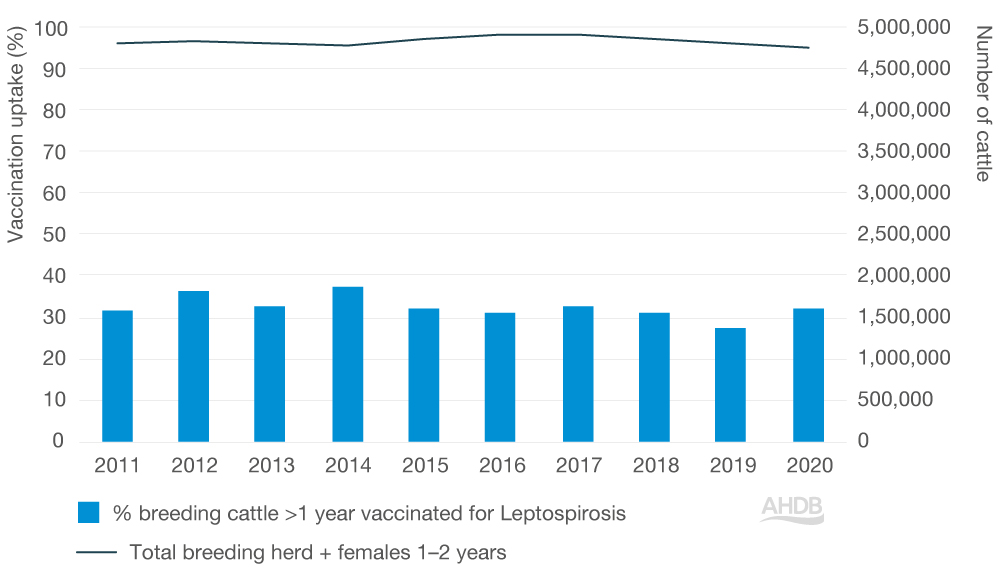Leptospirosis is a zoonotic disease caused by bacteria of the Leptospira genus. It is a common infection in dairy and beef herds and causes infertility, abortion and poor milk yield.
In the UK, the two most important types of Leptospira are Leptospira borgpetersenii serovar Hardjo and L. interrogans serovar Hardjo. Infection arises from contact with infected urine or the products of abortion.
The cost: £5–25m (Bennett R. 2005) to the national herd in health and productivity.
Two vaccines for Leptospirosis were marketed in the UK, both require a primary course of two doses with an interval of four to six weeks between them, then a booster given annually:
- Leptavoid-H contains inactivated L. interrogans serovar Hardjo and L. borgpetersenii serovar Hardjo
- Spirovac contains inactivated L. borgpetersenii serovar Hardjo type hardjobovis
Assumptions
Numerator: The number of doses administered has been calculated by multiplying the number of packs sold by the number of doses per pack.Denominator: It was assumed that only female breeding animals should be vaccinated and that the at-risk population was all female cattle between one and two years of age and the total female breeding herd over two years of age.
Common industry practice is to give breeding heifers a primary course of vaccination (two doses) before first service, between the ages of one and two years and to give all breeding females over two years of age a single annual booster vaccination. To take this into account, the denominator was, therefore, the number of breeding females over two years of age, plus the number of breeding heifers between one and two years of age multiplied by two.
Vaccination uptake
The Leptospirosis vaccine uptake was relatively stable at around one in three of all breeding cattle over the age of one year between 2011 and 2020. In 2019 there were supply issues and the proportion vaccinated fell to 27%.






